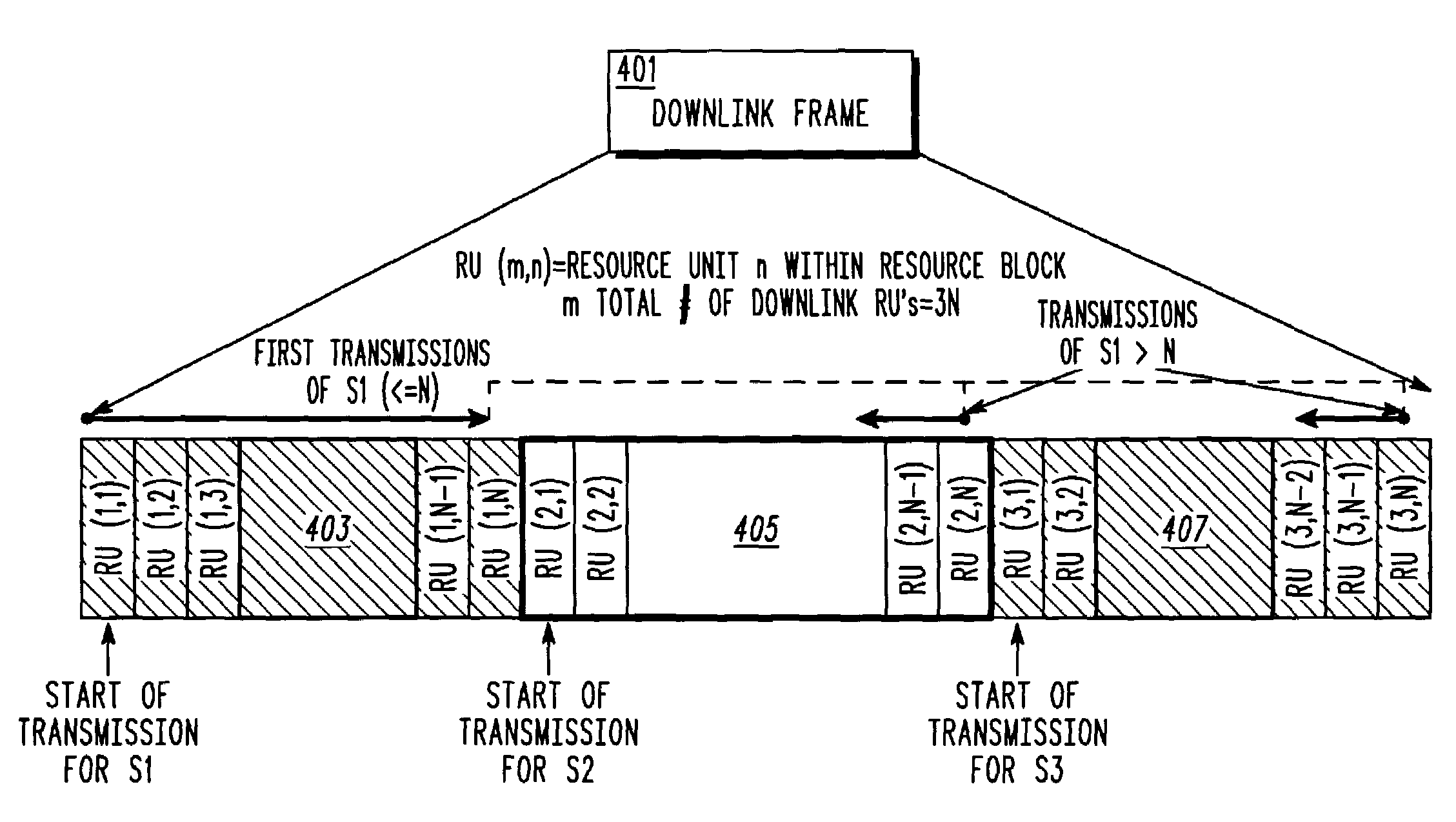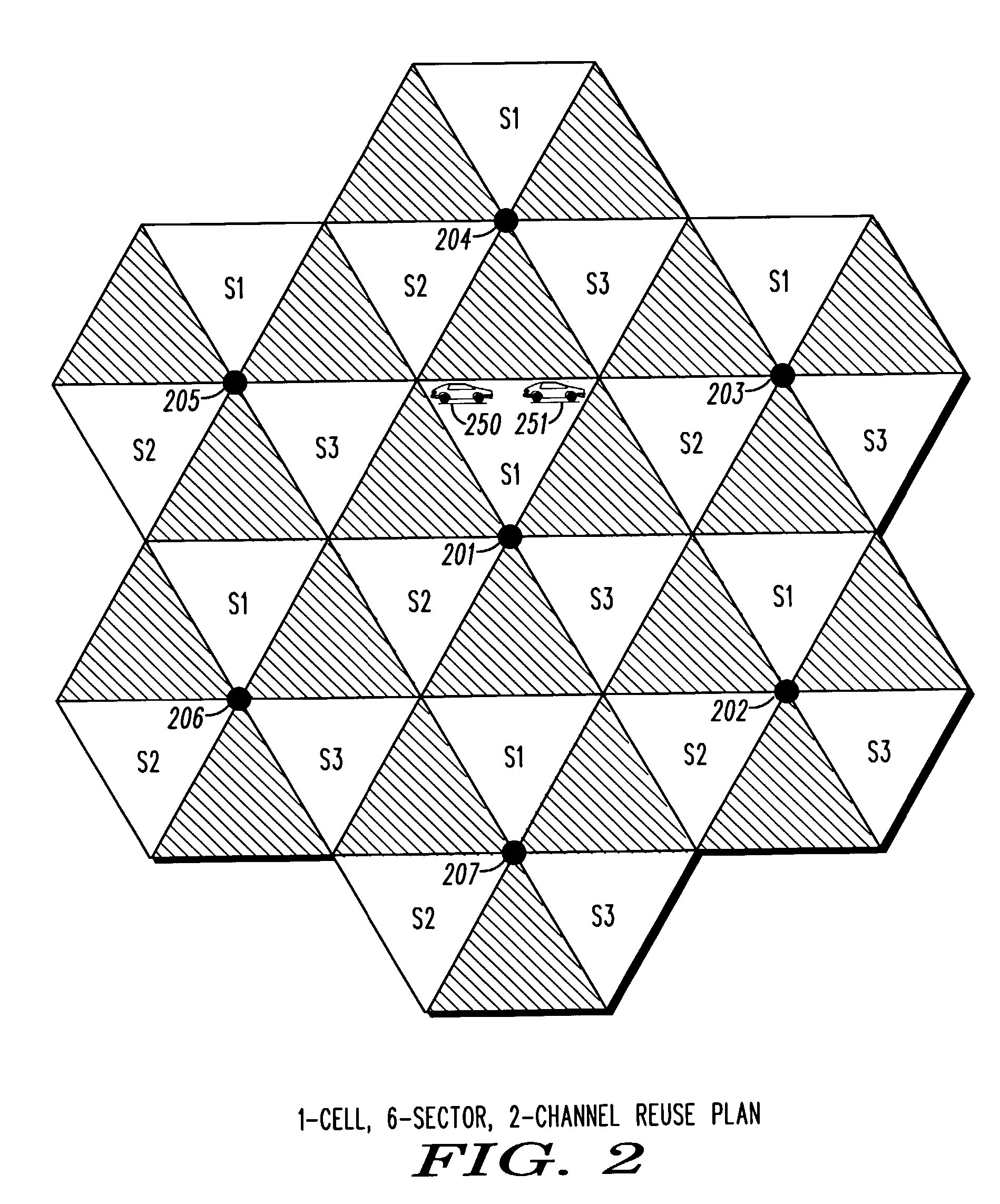Method and apparatus for reducing co-channel interference in a communication system
a communication system and cochannel interference technology, applied in the field of communication systems, can solve the problems of affecting the performance of communication systems, affecting the efficiency of communication systems, and often encountered by users within communication systems, and achieve significant increases in the level of cochannel interferen
- Summary
- Abstract
- Description
- Claims
- Application Information
AI Technical Summary
Problems solved by technology
Method used
Image
Examples
Embodiment Construction
[0048]The above text described how the proposed interference avoidance method can be applied to a transmitted frame in total, or to a subset of a frame such as a control channel or data channel. In this section, additional examples are provided to clarify some of the ways for performing interference avoidance on multiple channels in a frame in accordance with the preferred embodiment of the present invention. These examples are for illustration purposes and are not meant to limit the scope of the present invention to any particular example described below.
[0049]The first example performs interference avoidance independently on two channels of a frame, namely a control channel and a data channel, but does not use the interference avoidance method on other channels in the frame. This is illustrated in FIG. 8. In this example, the control channel, data channel, and other channels have separate locations within the frame. As a result, a control channel in one sector will never interfere...
PUM
 Login to View More
Login to View More Abstract
Description
Claims
Application Information
 Login to View More
Login to View More - R&D
- Intellectual Property
- Life Sciences
- Materials
- Tech Scout
- Unparalleled Data Quality
- Higher Quality Content
- 60% Fewer Hallucinations
Browse by: Latest US Patents, China's latest patents, Technical Efficacy Thesaurus, Application Domain, Technology Topic, Popular Technical Reports.
© 2025 PatSnap. All rights reserved.Legal|Privacy policy|Modern Slavery Act Transparency Statement|Sitemap|About US| Contact US: help@patsnap.com



